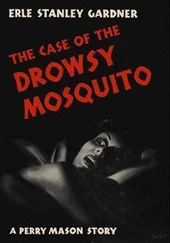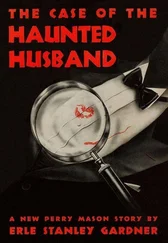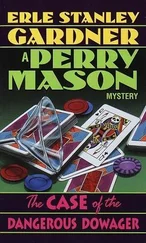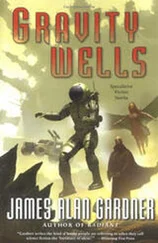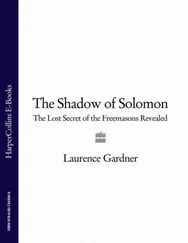Daniel Gardner - The Science of Fear
Здесь есть возможность читать онлайн «Daniel Gardner - The Science of Fear» весь текст электронной книги совершенно бесплатно (целиком полную версию без сокращений). В некоторых случаях можно слушать аудио, скачать через торрент в формате fb2 и присутствует краткое содержание. ISBN: , Издательство: Penguin Group (USA) Incorporated, Жанр: Психология, Политика, Прочая научная литература, на английском языке. Описание произведения, (предисловие) а так же отзывы посетителей доступны на портале библиотеки ЛибКат.
- Название:The Science of Fear
- Автор:
- Издательство:Penguin Group (USA) Incorporated
- Жанр:
- Год:неизвестен
- ISBN:9780525950622
- Рейтинг книги:3 / 5. Голосов: 1
-
Избранное:Добавить в избранное
- Отзывы:
-
Ваша оценка:
- 60
- 1
- 2
- 3
- 4
- 5
The Science of Fear: краткое содержание, описание и аннотация
Предлагаем к чтению аннотацию, описание, краткое содержание или предисловие (зависит от того, что написал сам автор книги «The Science of Fear»). Если вы не нашли необходимую информацию о книге — напишите в комментариях, мы постараемся отыскать её.
The Science of Fear — читать онлайн бесплатно полную книгу (весь текст) целиком
Ниже представлен текст книги, разбитый по страницам. Система сохранения места последней прочитанной страницы, позволяет с удобством читать онлайн бесплатно книгу «The Science of Fear», без необходимости каждый раз заново искать на чём Вы остановились. Поставьте закладку, и сможете в любой момент перейти на страницу, на которой закончили чтение.
Интервал:
Закладка:
Globally, there’s an even longer list of comparisons that cast doubt on the wisdom of current counterterrorism spending. Measles kills almost 300,000 children a year, even though the measles vaccine costs 16 cents a dose. More than 1.6 million children are killed by easily treatable and preventable diarrhea. In 1988, polio was paralyzing 1,000 children a day, but a $3 billion campaign pushed the virus to the brink of extinction by 2003— when the money ran out and polio surged back to life in twenty-seven countries.
In 2004, Danish political scientist Bjorn Lomborg brought together an array of experts from all over the world to discuss which of the world’s many woes could be tackled most cost-effectively. Terrorism wasn’t examined, unfortunately, but many other major issues were and a ranked list of priorities was produced. At the top came controlling HIV/AIDS. “At a cost of $27 billion, around 28 million cases of the illness could be prevented by 2010,” Lomborg wrote in How to Spend $50 Billion to Make the World a Better Place . “The benefit-cost figure is predicted to be 40 times that figure.”
Malaria also ranked highly in the Copenhagen Consensus. The disease kills roughly one million people a year, most of them African children, and drains $12 billion a year from African economies. Jeffrey Sachs, a renowned economist and development guru, estimates malaria could be controlled at a cost of between $2 billion and $3 billion a year, so here is a case where millions of lives could be saved and billions of dollars saved for an annual cost equivalent to about 5 percent of the money the United States budgeted for counterterrorism in 2007. But the money’s not there. The UN spent just $220 million for malaria in Africa in 2007, while the World Bank has promised between $500 million and $1 billion over five years. In 2005, President Bush was applauded for creating the “President’s Malaria Initiative,” but it provides only $240 million a year for five years. And so malaria will likely continue to kill sixty-seven times more people each year than the almost 15,000 killed by international terrorism over the last four decades.
None of this makes sense. It is all the product of the “unreasoning fear” that Franklin Roosevelt warned against in 1933, at a time when the economic order was collapsing, and the political order looked set to go along with it. Fascism and communism were ascendant and the shadow of war grew. It was a time so much bleaker than our own, and yet Roosevelt was calm. “This great Nation will endure as it has endured, will revive and will prosper,” he said in his inaugural address—if we do not allow our thoughts and actions to be guided by “nameless, unreasoning, unjustified fear.”
By word and deed, Roosevelt, the thirty-second president, steadied the United States and led it away from destructive fear. He left the country stronger and more confident. By word and deed, the forty-third president did the opposite, leaving the nation weakened and afraid.
12
There’s Never Been a Better Time to Be Alive
In central Ontario, near where my parents live, there is a tiny cemetery filled with rusted ironwork and headstones heaved to odd angles by decades of winter frost and spring thaws. This was farm country once. Pioneers arrived at the end of the nineteenth century, cut the trees, pulled up the stumps, and discovered, after so much crushing labor, that their new fields amounted to little more than a thin layer of soil stretched across the bare granite of the Canadian Shield. Most farms lasted a generation or two before the fields were surrendered to the forests. Today, only the cemeteries remain.
The pioneers were not wealthy people, but they always bought the biggest headstones they could afford. They wanted something that declared who they were, something that would last. They knew how easily their own existence could end. Headstones had to endure. “Children of James and Janey Morden,” announces one obelisk in the cemetery. It’s almost six feet tall. The stone says the first to die was Charles W. Morden. He was four years and nine months old.
It was the winter of 1902. The little boy would have complained that he had a sore throat. He was tired and his forehead felt a little warm to his mother’s hand. A day or two passed and as Charles lay in bed he grew pale. His heart raced. His skin burned and he started to vomit. His throat swelled so that each breath was a struggle and his head was immobilized on the sweat-soaked pillow. His mother, Janey, would have known what was torturing her little boy, but with no treatment she likely wouldn’t have dared speak its name.
Then Charles’s little brother, Earl, started to cry. His throat was sore, he moaned. And he was so hot. Albert, the oldest of the boys, said he, too, was tired. And yes, his throat hurt.
Charles W. Morden died on Tuesday, January 14, 1902. His father would have had to wrap the little boy’s body in a blanket and carry him out through the deepening snow to the barn. The cold would seep into the corpse and freeze it solid until spring, when rising temperatures would thaw the ground and the father could dig his son’s grave.
The next day, both Earl and Albert died. Earl was two years and ten months old. Albert was six years and four months. Their father would have gotten out two more blankets, wrapped his sons, and taken them out to the barn to freeze.
Then the girls started to get sick. On January 18, 1902, the eldest died. Minnie Morden was ten years old. Her seven-year-old sister, Ellamanda, died the same day.
On Sunday, January 19, 1902, the fever took little Dorcas, barely eighteen months old. For the final time, James Morden bundled a child in a blanket, walked through the snow, and laid her down in the cold and dark of the barn, where she and her brothers and sisters would wait through the long winter to be buried.
The same fever that swept away the Morden children in the winter of 1902 leapt from homestead to homestead—the obelisk next to the Mordens’ is dedicated to the two children of Elias and Laura Ashton, lost within weeks of their neighbors. The Ashtons already knew what it felt like to lose children. Their fifteen-year-old son had died in 1900, and a five-year-old boy had been taken from them eight years before that.
It’s hard to find a family that did not suffer losses like these in generations past. Cotton Mather, the Puritan minister in late seventeenth century New England, named one of his daughters Abigail. She died. So he gave the same name to the next daughter to be born. She too died. So he named a third daughter Abigail. She survived to adulthood but died giving birth. In all, Cotton Mather—a well-to-do man in a prosperous society—lost thirteen children to worms, diarrhea, measles, smallpox, accidents, and other causes. “A dead child is a sign no more surprising than a broken pitcher or blasted flower,” he said in a sermon, and yet, familiar as it was, death never lost its power to make the living suffer. “The dying of a child is like the tearing of a limb from us,” wrote Increase Mather, Cotton’s father.
Children were especially vulnerable, but not uniquely so. The plague that swept through the homes of the Mordens and Ashtons and so many others is typical in this regard. It was diphtheria, a disease that is particularly deadly to children but can also kill adults. In 1878, the four-year-old granddaughter of Queen Victoria contracted diphtheria and passed it on to her mother, the queen’s daughter. Queen Victoria was wealthy and powerful beyond compare and yet she could do nothing. Both daughter and granddaughter died.
That world is not ours. We still know tragedy and sorrow, of course, but in neither the quantity nor the quality of those who came before us. A century ago, most people would have recognized the disease afflicting Charles Morden (the enlarged neck was particularly notorious). Today, we may have heard the word “diphtheria” once or twice—it comes up when we take our babies into the doctor’s office to get their shots—but few of us know anything about it. Why would we? A vaccine created in 1923 all but eradicated the disease across the developed world and drastically reduced its toll elsewhere.
Читать дальшеИнтервал:
Закладка:
Похожие книги на «The Science of Fear»
Представляем Вашему вниманию похожие книги на «The Science of Fear» списком для выбора. Мы отобрали схожую по названию и смыслу литературу в надежде предоставить читателям больше вариантов отыскать новые, интересные, ещё непрочитанные произведения.
Обсуждение, отзывы о книге «The Science of Fear» и просто собственные мнения читателей. Оставьте ваши комментарии, напишите, что Вы думаете о произведении, его смысле или главных героях. Укажите что конкретно понравилось, а что нет, и почему Вы так считаете.

